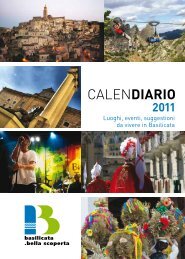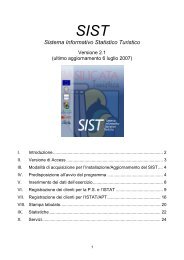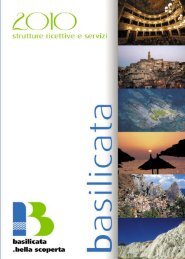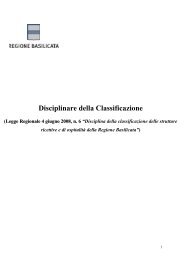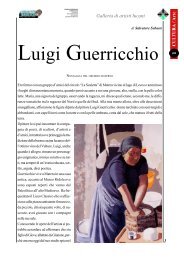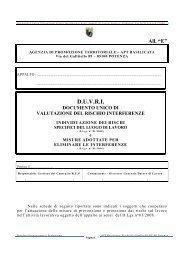Archeonaut - APT Basilicata
Archeonaut - APT Basilicata
Archeonaut - APT Basilicata
- No tags were found...
Create successful ePaper yourself
Turn your PDF publications into a flip-book with our unique Google optimized e-Paper software.
XXXXXXXXXXXXXXXXXXXXXXXXXXXXXXXXXXXXThere are some important 6th-5thcentury BC grave goods from the Braidadi Vaglio settlement, which can also betraced to basileis of the Peuketiantes.These include Greek and EtruscanCampania-produced bronze tableware,as well as implements used in banquets,moments of joyful gathering anddecidedly male politics. There arehuge meat cauldrons (lebeti), roastingskewers, tripods and vessels for mixingand drinking wine (kraters), andceremonial trappings for horses andriders that recreate the scene of anindigenous world in which differencein rank was truly expressed in everydetail.The Lucanians were people of Osco-Sabellian stock that arrived in theinternal areas of <strong>Basilicata</strong> towardsthe end of the 5th century. Their highground positions, which were providedwith fortifications (each within visiblecommunication range of the next),and the most important worship siteof their Olympus, the Rossano diVaglio sanctuary, have been broughtback to life in the museum throughThe “Braida”Exhibition Roomin VaglioThe NationalArchaeologicalMuseum in Potenzathe reconstruction of their sanctuarycourtyard. Rich votive gifts werediscovered there, including smallstatues, jewels and miniature vesselsdonated to the goddess Mefitis, whowas venerated together with the godMamerte (the Mars of the Lucanians).Mefitis was the goddess of springs andnature, and of the living and the world ofthe dead. When the “Lucanians becameRomans”, Roman dominion wasimposed on the indigenous settlementsand the two major centres, Grumentumand Venusia, arose. The transformationsof the territory and the cultural fusionsin the areas involved can be seen fromthe grave goods and remains recoveredin the patrician residences. The sectionof the museum dedicated to Roman<strong>Basilicata</strong> can be identified particularlyby the colour of its walls. Pompeian red,reminiscent of the Villa of the Mysteries,together with an image of maenads fromthe Dionysian procession and the verseof Horace, the Latin poet who was bornin Venusia, introduce the phase thatbegan in the 3rd century BC and lasteduntil late antiquity.Embossed bronze platedepicting Amphitrite ridinga dolphin, from Rossano diVaglio10 11



